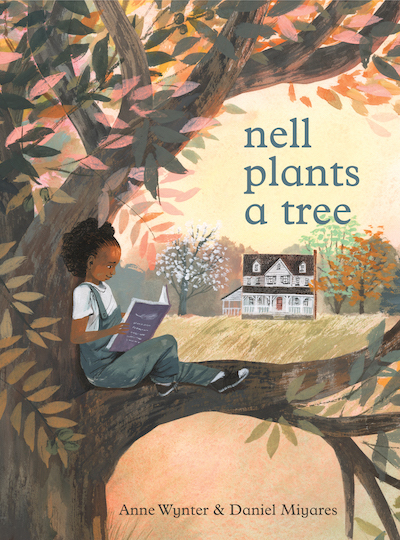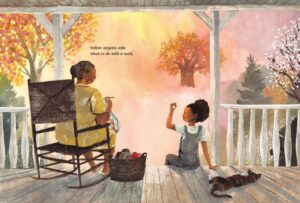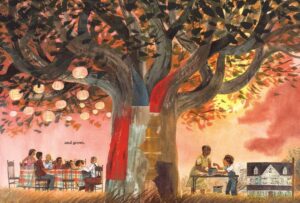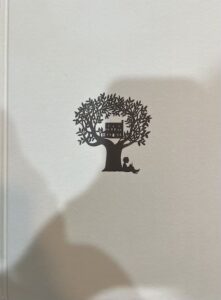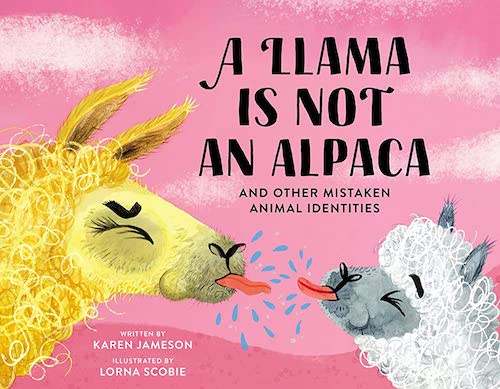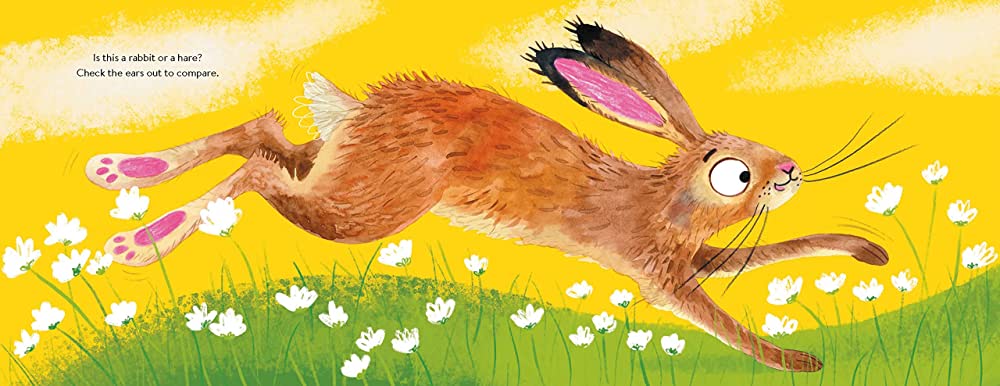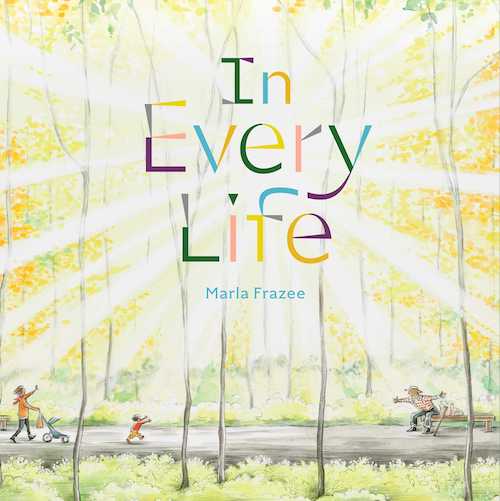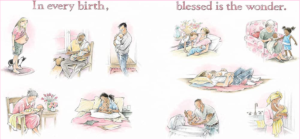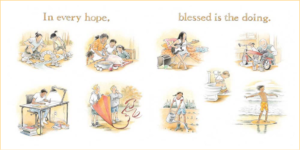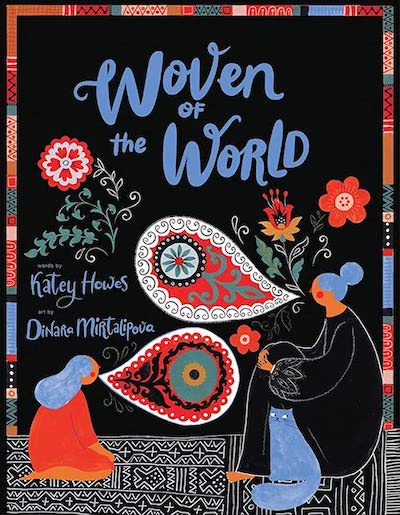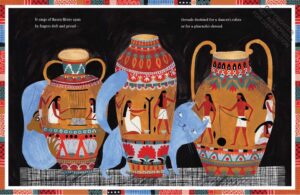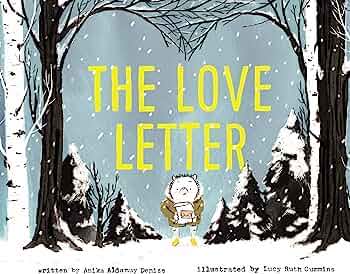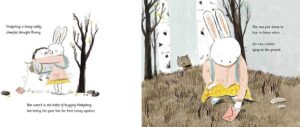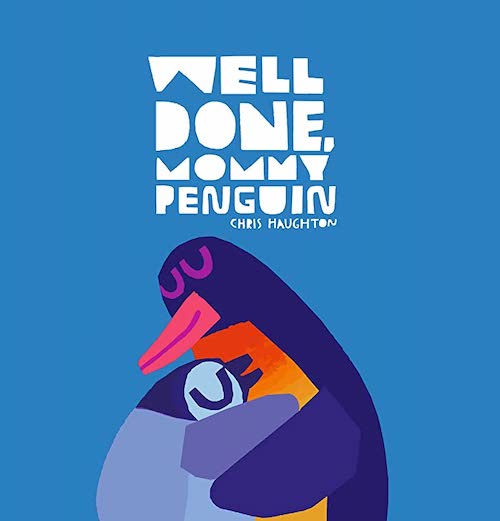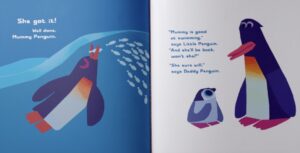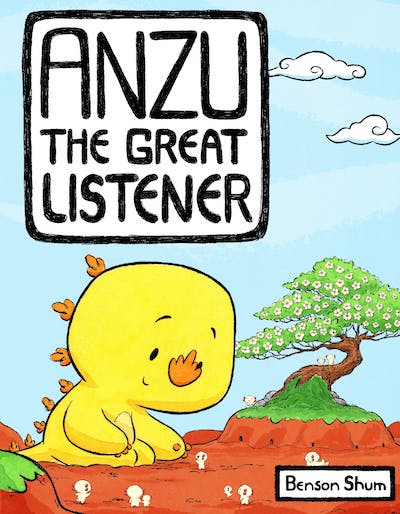
Roaring Brook Press | 978-1250776136
A few weeks ago, I had the good fortune to attend and present at one of the largest book festivals in the country – the Tucson Festival of Books. There, I met the kind and wonderful Benson Shum, who is both an author/illustrator of picture books and an animator for Disney!
I’m so glad he agreed to answer a few of my questions about writing and illustrating and the overlap of both with his experiences working in animation.
But before we get to that, I wanted to share a little more about ANZU THE GREAT LISTENER, the followup to Benson’s ANZU THE GREAT KAIJU.
🌸🌸🌸
Anzu is a sweet monster with a special power that makes flowers bloom. He loves the villagers in his neighboring city and is always ready to bring hope and laughter whenever they need it.
Whenever he’s feeling a bit overwhelmed, he pauses to spend time caring for his bonsai. One day, while waiting for the bonsai to bloom, Anzu hears the weeping of his neighbors and immediately wants to help. Would some of his beautiful flowers brighten the day?
“Floosh! A splash of cherry blossoms painted the sky.”
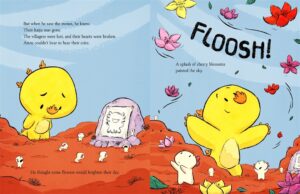
CLICK TO ENLARGE © Text and Illustrations by Benson Shum
Anzu’s heart was in the right place, but his best intentions fell short. He wondered:
“Did I do something wrong?
Did my flowers lose their power?”
After some time with his bonsai in quiet reflection, Anzu understands that what the villagers really need – more than flowers or his own good intentions – is someone to listen.
This story about patience and empathy is sure to resonate with young readers learning the importance of pausing to pay attention to your own feelings, as well as those of others.
🌸🌸🌸
DIANNE: Thanks, Benson, for taking time out of your busy schedule to answer a few questions! Anzu is a Kaiju – a “giant monster.” But, unlike the other Kaiju members of his family, Anzu’s superpower is not loud and flashy. Instead of wreaking havoc and disaster, Anzu’s superpower is a FLOOSH! of flowers, quiet and heartfelt.
I read that, as a child, you were a fan of monsters – Godzilla! King Kong! What led you to create Anzu, a Kaiju who is unlike any other?
BENSON: Hi Dianne! Thank you for reading Anzu the Great Listener and for your questions. Yes, I’m a huge fan of giant monsters. The thought of these amazing creatures that tower over buildings, and are larger then life is fascinating. They are usually portrayed as destructive, especially from the people’s/city’s point of view. But I thought, what are the monsters thinking? Do they like to destroy? Are they told this is what they are supposed to do? What if they wanted to know their city and its people? That sparked the idea and world of Anzu.
DIANNE: Your skillful use of pacing, panels, and page turns guides the reader to experience the story in the same way Anzu does. Quiet and peaceful when he tends his bonsai, overzealous when he tries to solve the villagers’ problems, and finally, returning to questions and a long deep breath that causes him to realize that what was needed most was listening.
How has your experience as an animator informed your work as a picture book creator? Are there some skills (like pacing and a character’s emotional arc) that transfer and other skills that don’t have an equivalent because the format and delivery of the story are different? Share a little of your journey from animator to picture book author and illustrator.
BENSON: Thank you! I really appreciate that. There are a lots of similarities between animation and picture books. They are both forms of visual story telling. And both are about characters – getting into the minds of who the they are and what they want.
Page turns are something I learned from picture books. And we have something similar in animation. We call it an “antic,” which is the anticipation of what the action will be. For example, if we have a baseball player. They have to “wind up” before they swing the bat. The wind up is the anticipation. So to translate that in picture books, you would wind up, then turn the page and swing!
The differences between picture books and animation are that in animation we have the time and flexibility to know who these characters are because it’s a longer format, and we see the characters moving and acting. But in picture books, we try to capture the most important emotion and expression that can carry a page and paragraph of text. This can be just as powerful, if not more so. So I love playing with the balance of text and imagery in my books.
With pacing, I try to think where the character is at. Like you mentioned, if Anzu is feeling excited, maybe the pages turns faster or there is more action. And when he feels calm, then I’ll try to slow down the page turns, keep it quiet, maybe a spread vs spots.
DIANNE: You have several more books coming out this year. What can you tell us about your upcoming projects?
BENSON: Thank you, yes, I have a couple of more books this year. CINDY AND PANDA is coming out May 9th, 2023 with HarperCollins. It’s about a little girl named Cindy, who loves to bake, but doesn’t always follow a recipe. One day, as she goes out to get some ingredients and brings back Panda! Chaos and fun ensues and they develop a sweet-as-pie friendship.
And FIRST NIGHT OF HOWLERGARTEN comes out August, 8th 2023. It’s about a little girl named Sophie who is anxious about her first night of Howlergarten (Kindergarten for werewolves). She’s afraid she might not transform into a werewolf on the first full moon. Will she be left out of the pack?
Thank you Dianne for your wonderful questions and having me on ReaderKidZ!
DIANNE: Thank YOU, Benson, for letting readers learn a little more about you, your books, and your writing process.
🌸🌸🌸
Enjoy this Teacher’s Guide, chock-full of ELA, Math, Science, and Social Studies Activities for the class
and…, for younger readers, this Activity Kit with coloring pages,a word search, maze and more!








